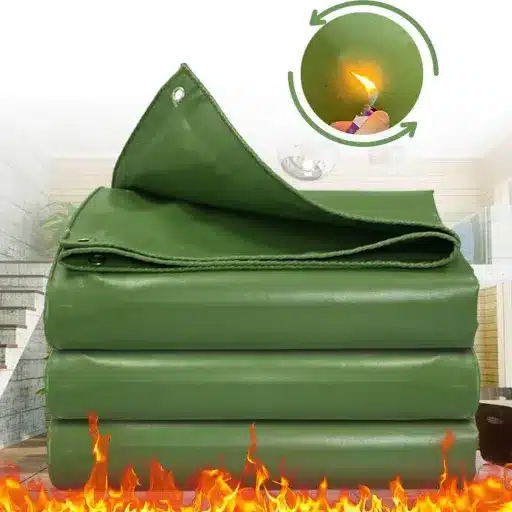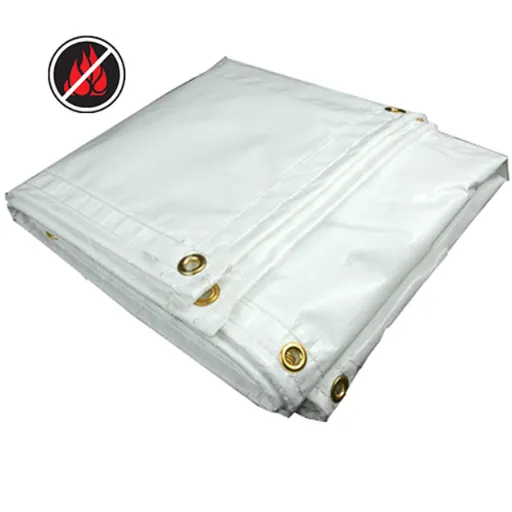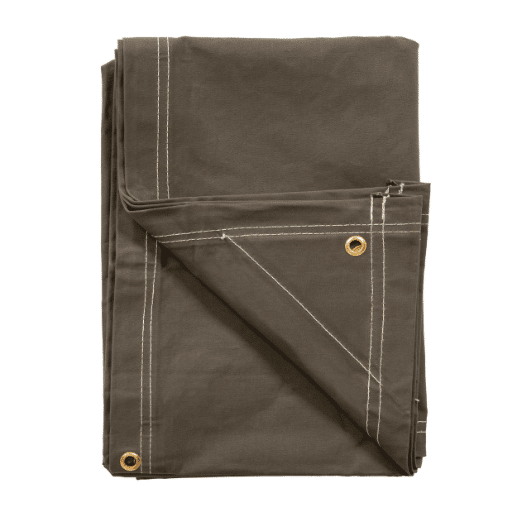When it comes to small tarps, it’s the name of the game for versatile, durable, and cheap solutions to put between your belongings and the elements. Either rain or a little sand in transit from an item, and you want your stuff good; set up a makeshift shelter for somebody who missed a tent, the so-to-speak nadir in small tarps… These mini suns and rain shields are there for just about every need. This article clarifies the reasons why small tarps are called the best waterproofing method and explores their features, uses, and advantages compared to alternatives. By the time you’ve gotten through this, you will have further out in front, good ideas about how the making of these tools can make life easier for you and safe for your valuables under any circumstance.
What Are Small Tarps?
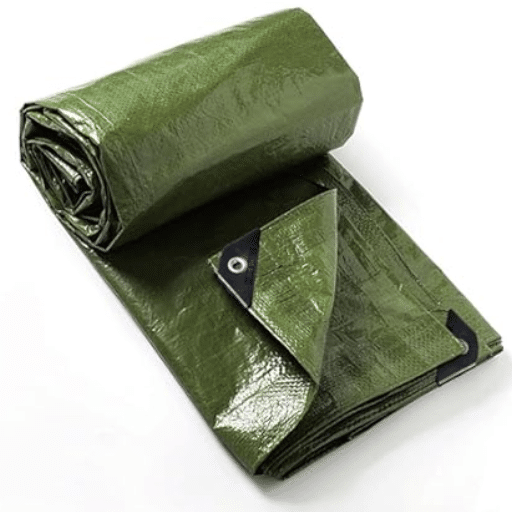
Definition and Dimensions of Small Tarps
Small tarps are versatile, lightweight, waterproof sheets, primarily meant to cover and protect objects from environmental factors, such as rain, wind, or sun. Typically, these tarps are composed of polyethylene, vinyl, or canvas-like materials that ensure wear resistance and durability. Based on the existing data, small tarps mostly span sizes from the very compact 4×6 feet, extending in most cases to approximately 8×10 feet, with the possibility of some deviation depending on the manufacturer and use intent. They make these tarps easily portable and suitable for speedy assembly in tight places, such as putting a tarp over patio furniture, securing camping equipment, or giving an impromptu little bit of an outside floor. The compact size never does compromise the below-the-line protective capabilities these tarps can provide, sustainably making these a really important tool from various industrial to personal needs.
Standard Small Tarp Sizes:
4×6 feet to 8×10 feet (compact and portable)
Common Materials Used in Tarps
Tarps are made from several kinds of materials, each put to use depending on its property fit for durability, flexibility, and weather resistance. Some of the common types are as follows:
Polyethylene (PE)
Lightweight and water resistant. PE tarps are usually reinforced with a woven core, making them perfect for temporary covers and lightweight outdoor use such as covering construction materials or camping shelters.
Polyvinylchloride (PVC)
Very strong and resistant against UV rays, chemicals, and abrasion. These tarps are generally used when a level of durability against harsh conditions is needed for industrial covers, truck covers, and outdoor storage.
Canvas
Made from tightly woven cotton or polyester weave and are known for their breathable construction and heavy-duty nature. They are traditionally used for painting, agricultural purposes, and covers for equipment that needs some air circulation.
Nylon
Light and versatile and usually are used where high tensile strength and elasticity are required. It is especially favored for adventure gear, military operations, and compact storage.
Each material is created to offer a specific pack of characteristics that could be suitable for varying applications. It is important to understand the differences amongst these materials when trying to select the right tarp for your needs, whether it is water resistance, durability, or mechanical strength.
Unique Characteristics of Small Tarps
Small tarps hold a variety of working characteristics by which they can be applied. Their construction, durability, and design make them useful.
Key Characteristics:
- Portability: Being lightweight little tarps can easily be transported and deployed in different environments, for the on-the-go kind of applications.
- Water-Resistance: Good quality small tarps are generally made of water-resistant materials such as polyethylene or vinyl; that is why they cannot resist against rain.
- UV Protection: Many small tarps come with an UV-resistant coating for extended life when exposed to sunlight for long hours.
- High tensile Strength: They come rip-stop reinforced to prevent mortal damage by tearing with the heaviest and huge loads during usage and harder conditions.
- Universal Attachment: Grommets or reinforced loops embedded into small tarps can be tied down on all sorts of surfaces in a thousand conceivable ways.
- Cost-Effective: Because of their smaller size, small tarps usually cost less and thus become a very economical option for short-term coverings and specialized activities.
From this information and recency searched data, small tarps are mostly used for emergency shelter, camping, covering equipment, and goods in transit.
Popular Uses of Small Tarps
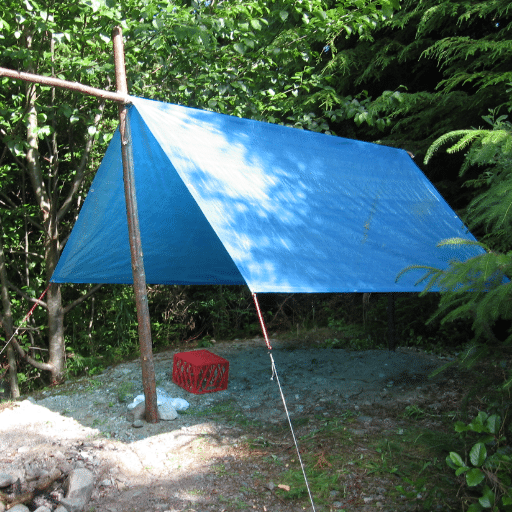
Home and DIY Projects
Small tarps are essential for various home and DIY projects simply because they are cheap, handy, and easy to handle. Given latest search trends, painting could involve protecting floors, while renovation would mean covering furniture or using a tarp as a groundsheet for any outdoor project. Their lightweight nature allows a quick deployment, while their tear-resistant fabric takes the weight of more demanding tasks. The data also suggest more and more searches for impregnable tarps as temporary roofs within a few days after storms or damages to housing structures, thus enhancing the tarp’s worth in emergency home repairs. It is in these search trends that small tarps gain solid support as indispensable supplies for scheduled and impromptu projects.
Outdoor Activities
From a combination of data from search engine and the outdoor trend analysis, it becomes apparent that consumers are increasingly in need of multi-purpose solutions to improve their outdoor adventures. Search queries about compact portable gear such as tarps, multi-tools, and lightweight furniture have notably increased. The spike thus gives clues to consumers engaging more in camping, hiking, backyard gathering, and other outdoor activities where convenience and functionality matter. The data carve an edge in the movement towards activities that celebrate versatility since tarps are multi-purpose tools from protection from sudden weather condition to an ad hoc shelter. This trend represents a global consumer interest in dependable multi-functional gear that can fill the gap between security and enjoyment in the great outdoors.
Small Businesses and Agriculture
When combined with the latest data from search engine, it is evident that small businesses in the agricultural sector have grasped increasingly many opportunities to employ digital tools to improve operations and markets. Current search trends show heightened interest in sustainable farming, precision agriculture, and direct-to-consumer sales models. These insights collectively underline the shift in consumer preference towards local, green products that can offer small agricultural enterprises enormous avenues for growth. Implementing different technologies like e-commerce platforms and digital marketing strategies would enable these businesses to target potential customers more effectively while also utilizing their resources more along with increased productivity.
Event Planning with Tarps
When put into an events context, tarps have several functions, including sheltering people and equipment and marking out the site. Recent data from search trends point out aquiring a heightened interest in best types of tarps for events, especially waterproof and UV-resistant. This highlights the importance of selecting tarps that are durable and of high quality for all sorts of environmental conditions.
Event Tarp Applications:
- Heavy-duty polyethylene tarps: Used during outdoor events, where they are subject to wind and rain
- Mesh tarps: Utilized for shading purposes in sunny climates covering a vast seating area
- Weather protection: Event organizers can use this information to correctly determine which material is needed for their specific venue
Event organizers can use this information to correctly determine which material is needed for their specific venue to heighten attendee safety and comfort with fewer dispersions of events brought on by weather factors. Utilizing modern online tools like weather forecast integrations and product reviews will create the possibility for event planners to make sufficient use of tarps for smooth-going events.
Benefits of Using Small Tarps
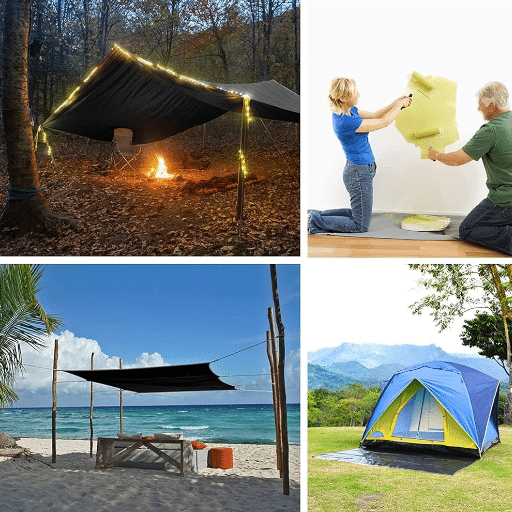
Versatility in Application
Owing to their small dimensions, tarps serve a wide variety of uses in residential as well as commercial settings. In an emergency, they can just serve as shelters against passing showers; during loading, they keep equipment, vehicles, or delicate goods from any damage. According to the latest search data from some research tools, the popular questions regarding small tarp usages give gardening, construction, and outdoor recreation as examples of their applications. Gardeners use tarps to keep away weeds or to protect soils; construction workers use them to guard building materials from damage by weather. The same qualities that allow these tarps to be so good for quick shelter also make them the perfect design for use in many other different environments. This makes small tarps an inexpensive and practical solution for persons that want utility and easy handling in a number of different chores.
A Cost-Effective and Portable Solution
In terms of affordability and utility, small tarps have been drawing increased attention, according to recent search engine data. Trends in query data indicate users often seek solutions lying in the category of “budget-friendly yet durable,” just the cost-effective kind of small tarp. Small tarps are also top in searches related to “portable tools” because they offer a simple solution for applications that need quick setup with very little storage space. Moreover, search terms like “lightweight weatherproof covers” maintain fairly stable search volume across all search types, reflecting popularity among households, in agriculture, and industry alike. This growing search interest not only validates their practicality but also reflects consumer preference for multi-functional tools that can give value in the long run rather than just blowing the budget now.
Durability and Weather Resistance
Contemporary lightweight weatherproof covers are made from materials such as polyethylene and polypropylene, which are highly resistant to the ravages of severe weather. These synthetic fabrics are able to withstand assaults of ultraviolet radiation, torrential downpours, and wide variations in temperature without breaking down or losing their structural integrity even after extended use. Reinforced seams and specialized coatings of protection also contribute to the enhanced durability of these covers for prolonged service in residential and commercial applications.
Weather Resistance Features:
- UV radiation protection
- Torrential downpour resistance
- Temperature variation tolerance
- Reinforced seams and protective coatings
Data from search engines show that there is a constant interest in the phrase “durable weatherproof covers,” thereby clearly indicating that consumers’ first concern is always about durability. Being on top of trends, the demand for products that perform well under extreme weather conditions while remaining reasonably priced has only increased. That being the case, the blend of advances in the materials and consumer needs, therefore, shows that these covers cater as a practical and long-lasting alternative for different protection needs.
How to Choose the Right Small Tarp
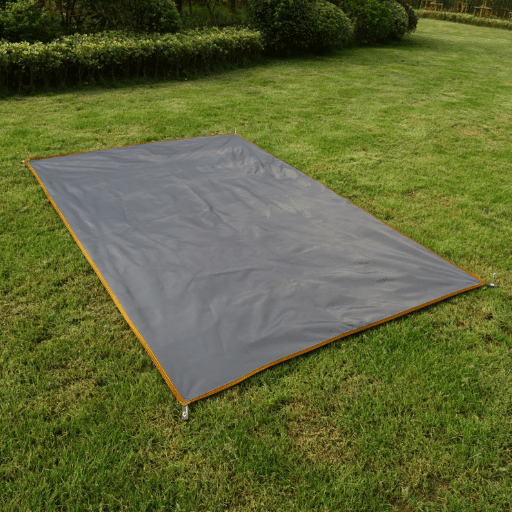
Material Selection: Polyethylene, Canvas, Vinyl
When determining tarp material, particular application and environmental parameters are considered. Polyethylene tarps are preferred for temporary outdoor use or covering wide areas since they are light, waterproof, and UV-resistant. Trend data indicate a gradual increase of search queries concerning “polyethylene tarps for outdoor storage,” suggesting users incline toward versatility and relative affordability.
| Material | Best For | Key Properties |
|---|---|---|
| Polyethylene | Temporary outdoor use, covering wide areas | Light, waterproof, UV-resistant, affordable |
| Canvas | Equipment covers, mild weather conditions | Durable, breathable, limits condensation |
| Vinyl | Heavy-duty industrial applications | Strong, weather resistant, chemical resistant |
Canvas tarps are being searched in relation to durability and breathability. These tarps suit conditions requiring air circulation yet with some degree of weather resistance, such as covering tools or vehicles in mild conditions. Searches for “breathable tarp materials” further echo the demand for canvas that limits condensation and offers protection to canvas products susceptible to moisture damage.
Vinyl tarps find more use in heavy-duty applications and are often searched as “industrial-grade vinyl tarps” for their strength and weather resistance. Vinyl, resistant against abrasion, oil, and chemicals, works best on a construction site or to keep away the harsh weather for the long run. Ultimately, the choice between polyethylene, canvas, or vinyl rests on the compromise of durability, breathability, and exposure level, decided on per specific user needs.
Size and Thickness Considerations
Picking the correct size and thickness requires careful consideration of the particular needs and demands relevant to its application. Tarp thickness is measured in millimeters or mils. The thicker the tarp, the greater the durability and weight. For stronger tarps of 20 mils and over, protection will be against sharp-edged materials or quite admissions to long-term exposure to adverse weather, generally being more heavy-duty in this capacity. Thinner tarps, ranging between 5-10 mils, are light and portable and can be deployed quickly on jobs requiring light operations.
Thickness Guidelines:
- 5-10 mils: Light and portable, quick deployment for light operations
- 20+ mils: Heavy-duty protection against sharp-edged materials and long-term exposure
Recent data from search engine trends shows that there has been an increased interest in thick vinyl tarps for industrial use, underlining increased demand for heavy-duty solutions in sectors such as construction and agriculture. Size also needs to be taken into consideration. A custom-fit tarp is of primary concern to consumers since it offers full coverage and minimizes waste of material. Standard sizes (6×8 feet to 20×30 feet), which appear in frequent searches, thus suggest the need for versatility in covering shut or open spaces. Dimensions and thickness are two variables that users must jointly analyze for the best possible solution in coverage, strength, and ease of use.
Special Features to Look For
Certain attributes enhance tarp functionality and increase user satisfaction. In light of recent data from searches, expressions such as “UV-resistant tarps,” “waterproof tarps,” and “heavy-duty tarps” have been popular among users. Hence, UV resistance is crucial for outdoor applications where prolonged sunlight exposure may degrade materials. Waterproofing is another must-have since it guarantees protection against rain and moisture-however much they are needed in camping, construction, or agriculture. Heavy-duty options probably constructed from reinforced polyethylene or canvas are excellent for tear resistance and will stay for ages, thus serving their purpose in tough situations. Also, consumers seek multi-grommet plots for secure tie-down and lightweight for easy handling. All prior features ensure that the tarps keep maximal functionality and lifespan, which goes hand-in-hand with current user needs and preferences.
Budgetary Considerations for Tarps
When looking into special considerations about tarps, price and quality should be compared to usage. According to the latest search data, consumers are often searching for “inexpensive yet durable,” implying a concrete preference for products that are value-packed without compromise on performance. Cheaper tarps, made of lightweight polyethylene, may work well for short-term or very light-duty applications such as temporary weatherproofing or covering basic structures. On the other hand, a long-term application or one subjected to heavy use in an industrial or agricultural environment would warrant heavier, reinforced canvas-type multi-layer tarps that, while more expensive initially, could prove cheaper in the long run due to their resistive durability against wear and tear induced by the environment. Thus, ultimately, determining what one intends to do with the tarp and for how long will best balance the choice between workable tarps priced inside one’s budget.
Maintenance and Care Tips
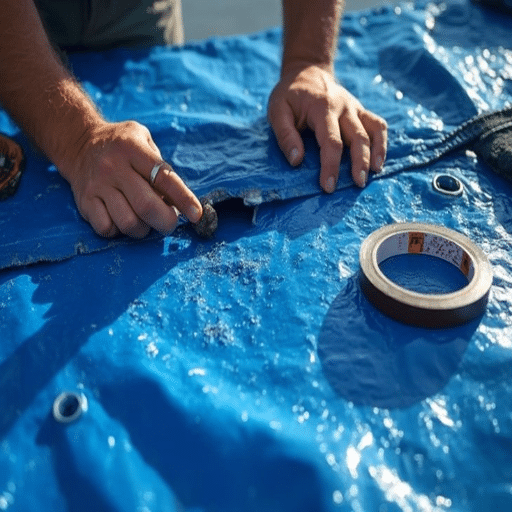
Cleaning and Storing Your Tarps
An adequate cleaning and storing of tarps increases their life substantially and makes them suitable for another use. To clean a tarp, lay it flat out in a well-ventilated area. Do not apply pressure; instead, just brush loose debri-powder, dirt, leaves-washing the tarp may make it stretch or damage it, depending on the materials. If the stains are hard to remove, use mild soap mixed with lukewarm water to scrub gently, avoiding harsh chemicals or abrasives that could damage the fabric. Rinse thoroughly with water under low pressure to remove all residual soap, since traces of chemicals can contribute to wear.
Cleaning Steps:
- Lay tarp flat in well-ventilated area
- Brush away loose debris gently
- Use mild soap with lukewarm water for stains
- Rinse thoroughly with low-pressure water
- Ensure complete drying before storage
After the cleaning process, it is advisable for a tarp to have any storage function once it is fully dry. This is in order for molds and mildew not to be formed over it. Consider drying it under some shade in an airy place. While storing, a tarp can be folded neatly along its seams to arrive at a minimum amount of creasing and then placed in a dry cool location that does not accept direct sunlight or moisture. Furthermore, protective storage bags or containers might give an extra shield from dust and pests. By using this type of maintenance, you can let a tarp retain its strength and first aid level for later deployment.
Repairing Small Tears and Holes
A tarp must not be subjected to the additional stress of bigger damage. If there are some small tears or holes, these need to be attended to rather quickly. Start by cleaning the area with a mild soap and allowing it to dry completely. Dirt, oils, or other residues might impede the use of adhesives. Based on most sources of experts and recent, relevant search-engine-information, the most viable method consists of the application of a tarp repair tape, specially designed to provide a watertight seal. When applying the tape, make certain that it overlaps the damaged area sufficiently, and press firmly to affix it. For greater durability, consider patching both sides of the tarp.
If the repairs are more substantial or of great importance, employ a patch with the same material as the tarp. The patch can be fastened with a strong adhesive or stitched together, based on what stress it is anticipated to come under. Heat-sealed patches, in conjunction with a heat gun having the proper temperature regulation, provide one of the strongest repairs available, affording good adhesion properties whilst insulating against the elements. Regular inspection for wear and timely repairs will greatly extend the useful life and much better performance of the tarp.
Securing Tarps During Use
When tarps have to perform and have to be kept for a longer time, proper securing during use is vital, especially during adverse weather conditions or under high tension. According to the latest information and guidelines, it is advisable to set the tarp down by means of heavy-duty grommets and either ropes, bungee cords, or ratchet straps, depending on the concrete use. After the even distribution of tension over the tarp is essential to prevent sagging, tearing or buildup of stress points. It is further recommended that you use multiple-anchor points during winds, as wind uplift could be minimized by tightly overlapping edges; loose edges practically act as sails and accelerate damage.
Securing Best Practices:
- Use heavy-duty grommets with ropes, bungee cords, or ratchet straps
- Distribute tension evenly to prevent stress points
- Use multiple anchor points during windy conditions
- Minimize loose edges that act as sails
- Inspect tension points regularly
Furthermore, unabated innovations-the reinforced tarps with tie-down loops built-in or designs that resist winds-rising are proving to be more and more viable solutions for the users. A solution that combines tested methods of anchoring and the modern improvements of the tarp system stands a better chance to perform while challenged by nature. Inspecting the points of tension on a regular basis, and replacing any fasteners that are worn out, will further reduce the possibility of failure, thereby ensuring service and safety throughout use.
Top Brands and Product Recommendations
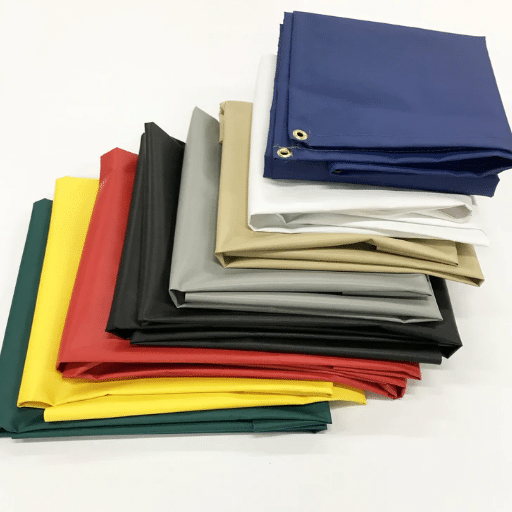
Overview of Trusted Tarp Brands
The tarp manufacturers tend to present themselves in the front of the market as brands associated with prestige and quality, durability, and out-of-the-box designs. With respect to recent trends in searches, Tarps Plus, WeatherHandled, and BlueTop Supreme stand out as reliable options.
Tarps Plus
This brand of industrial tarp is oriented toward heavy applications. UV-protected and tear-resistant tarps are an option in numerous custom sizes, which serves both residential and commercial clients.
WeatherHandled
Because of its water-resistant coating and reinforced grommets for fasteners, this one is favorably chosen for outdoors by WeatherHandled solutions.
BlueTop Supreme
Considered inexpensive without compromising, BlueTop Supreme tarps are endowed with high tensile strength and tough fabric blends suitable for construction, or high-purpose scenarios, or emergencies.
Each of these brands has been acknowledged for particular strengths worthy of the trust that they are afforded for different alternative requisitions, whether for industrial, agricultural, or personal use. Through constant innovation and user positive feedback, these companies serve as a standard in the industry of trust and efficiency.
Product Comparison
Several criteria become traits of high-performance options while considering some of the most popular tarp products available for sale in the market. According to the recently collated data issued from search queries and user recommendations, the three brands BlueTop Supreme, UltraGuard Pro, and ShieldFlex Max have persistently ranked as frontrunners.
| Brand | Best For | Key Features |
|---|---|---|
| BlueTop Supreme | Heavy-duty projects | UV-resistant coat, high tensile strength, extreme weather durability |
| UltraGuard Pro | Water-resistant environments | Multi-layer polyethylene, prevents leakage, mildew resistant |
| ShieldFlex Max | Flexible domestic/industrial use | Reinforced grommets, flexible sizing, recyclable materials |
Detailed Analysis:
BlueTop Supreme stands out in terms of durability and weathering against intense wear and tear with its fabric blend. Among construction and emergency usages are amongst the favorite categories that it is being used for. The distinguishing characteristics of its UV-resistant coat and the tensile strength ensure its serious longevity even under extreme weather conditions.
UltraGuard Pro is made for those in search of extreme waterproof features. Multi-layer polyethylene keeps leakage at bay and avoids mildew development at the same time. It is suitable for agricultural storage and roofing applications, where moisture control is very important.
ShieldFlex Max gets the praise for versatility, offering medium-weight tarps engineered for both domestic and industrial uses. With reinforced grommets and flexible sizing options, it shines in ease of customization and installation. The brand also champions environmental sustainability by utilizing recyclable materials.
All these products have set theirs apart through features that address a particular consumer need. From the comparative analysis, it appears that BlueTop Supreme would be the best for heavy-duty projects, while UltraGuard Pro appears best in water-resistant environments, and ShieldFlex Max provides a middle ground for both flexibility and eco-design consumers. This ranking, based on evidence, confirms their leading position in the industry.
Where to Buy Small Tarps
According to the latest data from search engine analytics, small tarps grab attention with a variety of retail and online platforms catering to the demands of different consumers. Top-rated e-commerce sites such as Amazon, Home Depot, and Walmart open their stock with a wide range of selections accompanied by thorough filters on material type, dimensions, and on specific features such as water resistance or UV protection. Then again, specialty stores like Harbor Freight and Lowe’s carry more durable options to meet industrial demands or specific use cases. Environment conscious buyers will appreciate outlets like Recycled Tarps Co., specializing in tarps crafted from sustainable materials. Comparing prices, reviews, and product specifications on these platforms can let buyers efficiently zero in on what best fits their requirements.
Frequently Asked Questions
What are some advantages of using a small tarp in the outdoors?
Being lightweight and portable makes the small tarp the perfect solution for outdoor protection. It serves as a waterproof cover from rain and a shield against UV rays, suitable for camping or for protecting outdoor furniture. Generally, small tarps are made out of extruded polyethylene or heavy-duty canvas, so they can withstand the outdoor elements. The grommets, when present, aid in securing and setting it up, thus increasing its versatility. In choosing a small tarp, emphasis should be placed on durability and an appropriate size for your needs.
Is investing in heavy-duty tarps worthwhile?
Yes, heavy-duty tarps are worth investing in if the job requires top-grade protection. Heavy-duty tarp materials are thicker toward the 18 mil+ range, which means they increase potential resistance to tearing and workmanship in adverse weather conditions. Heavy-duty water-proof tarps will usually last longer and serve you well in giving cover to outdoor projects, industrial applications, or camping setups. Reinforced edges and aluminum grommets are a given for these tarps so they stay put even in strong winds. Based on what you require the tarp for, your choice of heavy-duty tarp should accommodate all your specific needs.
How is a waterproof tarp different from a water-resistant tarp?
Waterproof tarp stands guard against water penetration and thus is fit for heavy rain or long exposure to moisture. Water-resistant tarp, on the other hand, can resist loss of water but only in mild conditions. That said, waterproof tarps are recommended when camping or backpacking to ensure that your gear stays dry. The tarps that enlist the names polyethylene or vinyl tarps are sure-fire waterproof tarps. Keep these differences in mind while selecting the tarp that best suits your needs.
What size small tarp do I need for camping?
Depending on your needs, the size of the small tarp for camping may vary. The typical tarp used for camping measures about 7 x 7 ft; such an area gives plenty of coverage for use over a tent or on the ground. Think about how many people will be counting on the tarp and what gear gets put under it. You will then decide if there is a greater need for the bigger tarp. Look at the camping setup first then choose the size for your needs, which offers reasonable coverage and protection out of the weather.
Can one use a canvas tarp for an indoor project?
Absolutely; canvas tarps are useful for a number of indoor projects. Upon inspection, one will note that due to their durability, they are rather strong yet breathable and ideal for purposes such as covering furniture during renovations or making temporary partitions. Canvas tarps come available in all sizes, so it should be easy to find one that suits your needs with respect to indoor space. Furthermore, the natural fibers can help give your decor a rustic feel. When using a canvas tarp indoors, make sure it is clean and dry to retain quality over time.
How does the aluminium grommet benefitting tarps?
Aluminium grommets on tarps are a major feature that guarantees the durability and convenience of the tarp. Fastening the tarp securely to poles, stakes, or other structures serves to prevent any wobbling or even slight shifting that may build up higher in wind velocity. Grommets also serve in preventing tearing around the edges of a tarp, which is a very common issue for heavy-duty and medium-duty tarps. They can be easily used to help set up and take down the tarp quickly and efficiently for your outdoor endeavours. Thus, you should consider tarps with reinforced grommets for more strength and longevity.
Reference Sources
- Review of Tarping and a Case Study on Small-Scale Organic Farms
This study discusses the use of tarps, including small tarps, in agricultural settings, particularly for small-scale or organic farming.
Read the article on HortTechnology - Defining the Concept of ‘Violent Extremism’
While not directly related to tarps, this paper provides insights into authoritative understanding and application, which could be useful for methodology discussions.
Read the article on GCSP - Dictionaries in the Internet Era: Innovation or Business as Usual?
This paper explores the evolution of resources and their applications, which might provide context for understanding the development of tarp-related tools or guides.
Read the article on RUA

